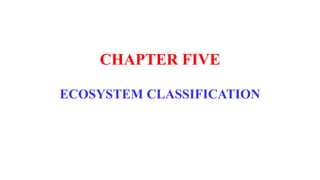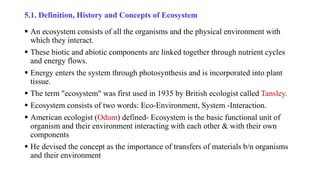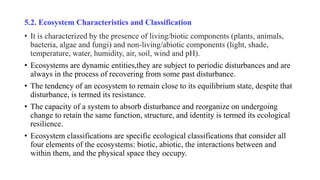This document discusses ecosystem classification and structure. It defines ecosystems as consisting of biotic and abiotic components that interact. Ecosystems are classified into terrestrial and aquatic types. Terrestrial ecosystems include forests, grasslands, tundras and deserts, while aquatic ecosystems include freshwater and marine. The structure of ecosystems includes producers, consumers and decomposers. Energy enters ecosystems through photosynthesis and flows through trophic levels as organisms consume each other.










